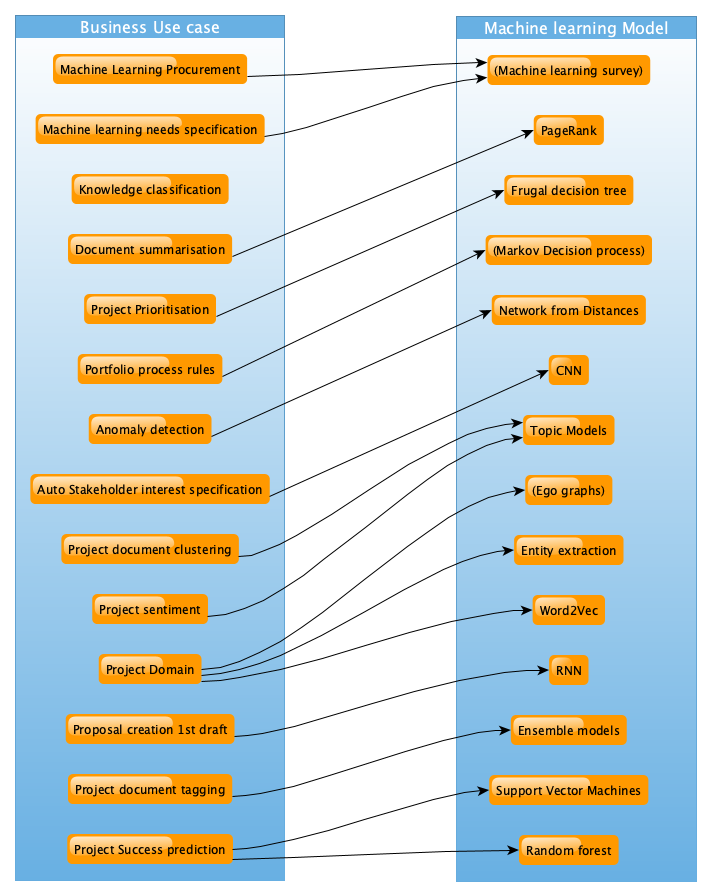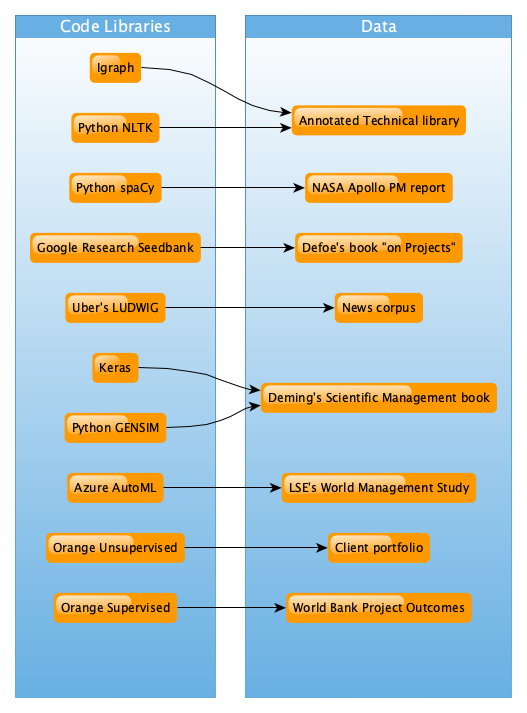Applying appropriate machine-learning approach.
Once a project-management use case has been selected see here, then the following steps can be applied to apply the approach to the projects.
- Selection of machine-learning method
- Selection of machine-learning model
- Selection of model environment
- Selection of machine-learning code library
- Selection of suitable data-sets for each Use Case
- Summary
- Get started
- Acknowledgements
Selection of machine-learning method
Use cases will be better suited to one type of ML method or another.

Selection of machine-learning model
To apply this type of ML method, one may wish to use one of the following specific model types as a first pass.

Type of ML model suitable per Project Use Case. Models that are classical rather than machine learning in brackets
Selection of model environment
Here are some accessible environments where one can apply these types of ML methods.

Selection of machine-learning code library
Here are some examples of libraries where these models can be found in a convenient format

Selection of suitable data-sets for each Use Case
For example, these data-sets could be selected.

Summary
Machine learning boosts most stages of the project lifecycle, from Project definition to close-out.
This has illustrated some routes to first application of machine learning models with one’s own portfolio data.
- Identify possible use cases
- Map to business area/lifecycle
- Narrow down to a generic ML method
- Select a straightforward ML model
- Choose a suitable model environment
- Choose a code library or algorithm to apply that model
- Select data-set
This gives something to play with, and get something to work. There are plenty of ML prototyping frameworks available to provide structure for developing a prototype.
Get started
Please go to the relevant code and document libraryhere
Acknowledgements
Agrawal et al have a canvas here for planning it at high level, understanding purpose and constraints.